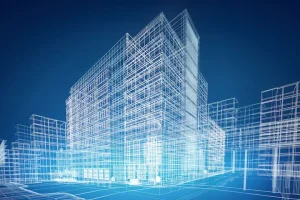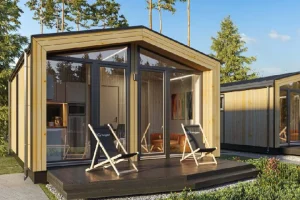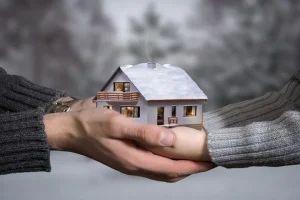In life, there are things that are an integral part of life. Paying attention to these things can have a great impact on people’s lives and spirits. One of these impressive things are colors. Colors have always been an integral part of our human lives. From a long time ago and since the beginning of old architectures in Iran until today, when many architectural styles have come and gone, colors have always been one of the factors that have been considered. But today’s topic is color psychology. Color psychology is one of the most important factors that we should pay special attention to in any part of life. Applying the principles of color psychology, especially in interior decoration, is a very legitimate point of importance. Follow us till the end of the article to know more.
What is color psychology?
Color psychology is called the science of correct use of color. In fact, color psychology is the study of the effect of colors on human behavior. Color can have many effects on people’s mood. For example, they can affect human feelings and emotions and imagine that you are in a state of anger. What you may not know is that sometimes many colors can have a positive effect on your mood in this situation. Or, for example, some colors have a nostalgic mood and can remind you of the past. In addition, colors can also affect your possible behavior. For example, sometimes colors can even affect your appetite while eating. So now you can understand the effect of colors in interior decoration.


The psychological effect of color in interior decoration
Color psychology is very important in interior decoration. This issue is also important in external decoration. Our topic is about the psychological effect of color in interior decoration. Colors can be useful in creating a calm and relaxing environment. At the same time, they can show their impact in creating a lively and exciting environment. Let us understand the matter better by mentioning some examples. Imagine you live in a small house. You need your home to look bigger. In such cases, it is better to choose a light color. Or, for example, decoration designers always recommend using cold colors in the bedroom to have a calmer feeling. Earlier in an article, we learned about the psychology of cold and warm colors. Now we are going to get acquainted with soft and sharp colors.

Soft and intense colors
According to the psychology of color, colors can be divided into two general categories. Soft colors and intense colors. What do you mean by soft and sharp colors?
soft
In general, soft colors are the colors that have a brighter color spectrum. These colors are mostly used to induce a sense of calmness, security and concentration. For example, you have seen that many people use soft colors in environments such as bedrooms, bathrooms, and offices where concentration and relaxation are needed. In general, soft colors include bright and pastel colors. Such as blue, yellow, pink, white and other colors that are brighter. In addition to the aforementioned mental effects, these colors also have physical effects on the environment. One of these effects is that it makes small environments look bigger. They also play a good role in providing sufficient ambient exposure.
Sharp
Intense colors are placed on the opposite side of soft colors. Maybe you understand what we mean. But if this is not the case, you should know that colors such as red, orange, purple, brown and other such colors are included in the category of strong colors. Even the effects of strong colors are opposite to the effects of soft colors. According to the science of color psychology, in general, strong colors can be effective in inducing a sense of vitality, freshness and excitement to humans. This is the reason why we see these colors in environments where we need these emotions. What environments do you mean? Amusement park, kitchen, shops, etc.
Color psychology in different architectural styles
From a long time until now, paying attention to color and color psychology has always been the priority of architects and decoration designers. This issue is completely visible when looking at buildings with different architectural styles. But now, in this part of the article, we intend to examine the psychology of colors in some of the most popular architectural styles.
classic
In general, the classic style is a glamorous style. It means that as much as possible, people are attracted to each and every component of the environment. You can see this in the decorative elements used in this style. You must have seen in some classical buildings that a lot of warm colors are used, such as red, gold, brown, etc. This is exactly the goal of the classic style. One of the other properties of bright colors is that they can attract people’s attention.


modern
Modern style can actually be considered the opposite side of classic style. In fact, in this style, it is tried to use as little aristocratic decorative elements as possible. If we want to say more completely, in modern style, more elements are used that are industrially made and have a modern nature. You may confuse this with neoclassical style, but there is a big difference between modern and neoclassical style. In modern style, it is generally tried to use more soft colors.
minimal
But now let’s talk about another style that has a special place today. A popular style that is widely used today. Minimal style. The minimal style has been created since the beginning of its formation to deal with the luxuries and bustles that have involved humans. What did we say before? We said that soft colors can inject people with a sense of peace and comfort. As a result, we can conclude that we use more soft colors in the minimal style.

In this article, we examined soft and intense colors in the psychology of color. Choosing the right color for different environments can convey a good mood to you and make you forget bad events. So never forget the psychological importance of color. When choosing a color for interior decoration, you should consider things such as the size of the space, moral spirit, light and type of use. You have two ways to choose the right color. The most traditional and best way is to get help from a decoration design expert. Another way is to use artificial intelligence tools to pre-design the environment. We are ready to provide free service and advice here at Ohaddeco Group, using the knowledge of professional experts. You can contact us to communicate with the experts of the collection.




